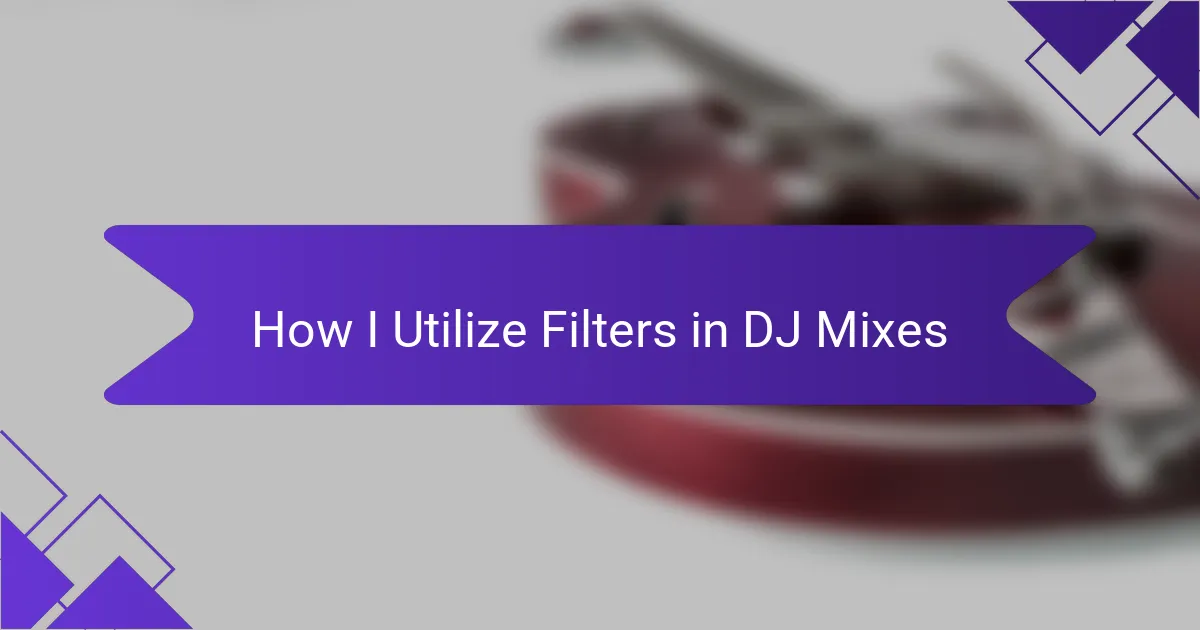Key takeaways
- DJ entertainment is about creating an engaging experience through unique sound layering and audience connection.
- Serato Studio offers intuitive tools for layering samples, promoting creativity and experimentation across genres.
- Effective sample layering techniques include balancing frequencies, adjusting volume levels, and using effects to enhance depth.
- The journey of sound exploration in music production fosters continuous learning and artistic growth.
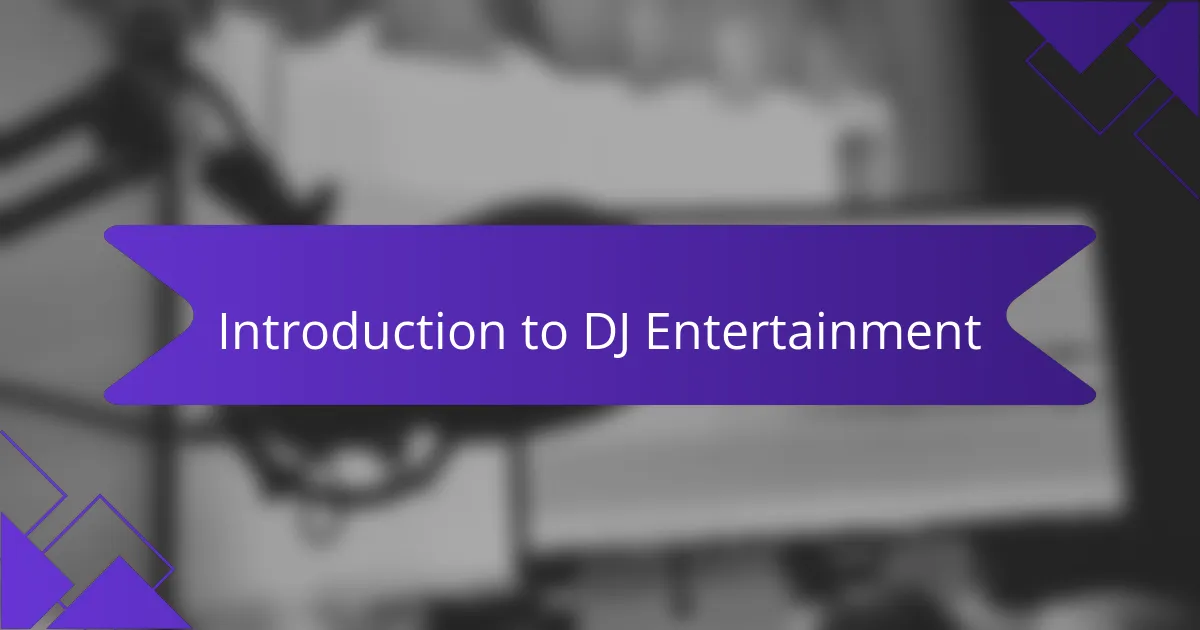
Introduction to DJ Entertainment
DJ entertainment encompasses a vibrant world where creativity and technology collide. As I dove into this realm, I quickly realized that it’s more than just mixing tracks; it’s about crafting an experience for the audience. I still remember my first gig where the energy in the room was palpable—each beat I layered brought people together in a shared moment of joy and beat-driven connection.
Understanding the tools at your disposal is essential in this dynamic field. Serato Studio has transformed my approach by allowing me to layer samples seamlessly. Here are some key points to consider when getting started:
- Embrace Creativity: Experiment with different genres and sounds to find your unique mix.
- Know Your Samples: Choose samples that resonate with your audience and evoke emotions.
- Layer Effectively: Use layering techniques to build depth and texture in your tracks.
- Practice Often: The more I practice layering, the more confident I feel in my live performances.
- Engage with Your Audience: Remember, the ultimate goal is to create an unforgettable experience for them.
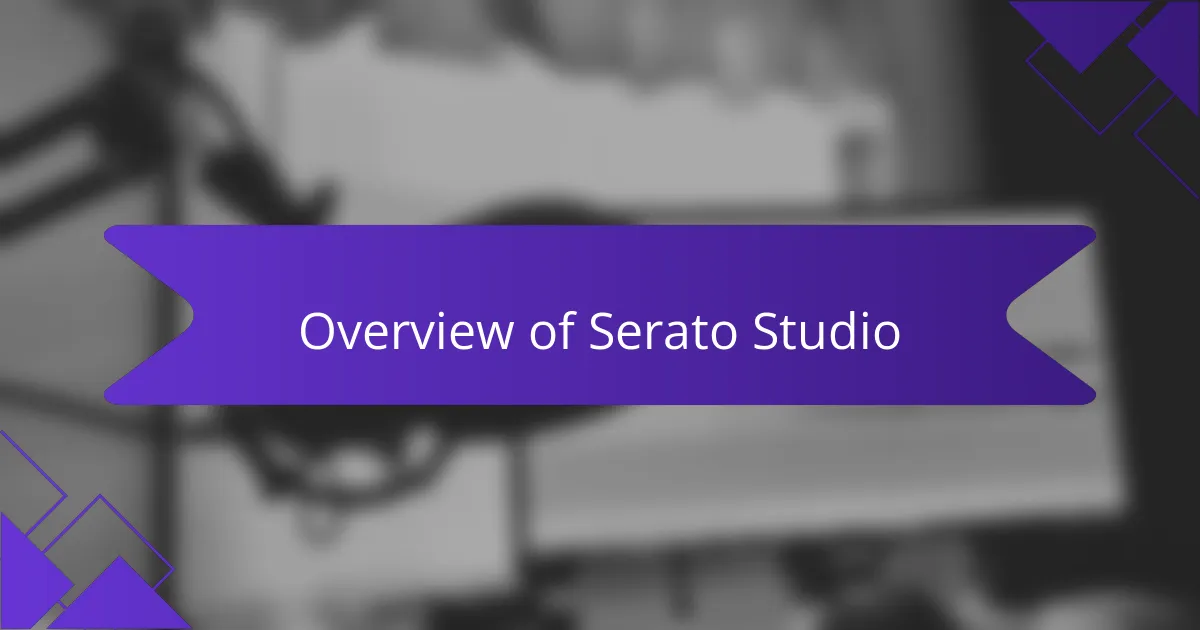
Overview of Serato Studio
Serato Studio is a powerful tool designed specifically for music makers and DJs. I remember the first time I opened it; the intuitive interface made me feel right at home. It’s tailored for creativity, allowing you to layer samples effortlessly, which is essential for crafting unique tracks.
One of my favorite features is how Serato Studio lets you blend different genres seamlessly. It’s like a playground for sound experimentation! You can create rich, textured music that resonates with your style and vibe.
- Intuitive interface for easy navigation.
- Specialized tools for layering samples.
- Built-in audio effects to enhance your sounds.
- Cross-platform compatibility to suit various workflows.
- Community support with resources and tutorials available.
Exploring Serato Studio truly transformed my approach to music production. Each feature invites you to get lost in the process, making it more than just a software but a creative companion.
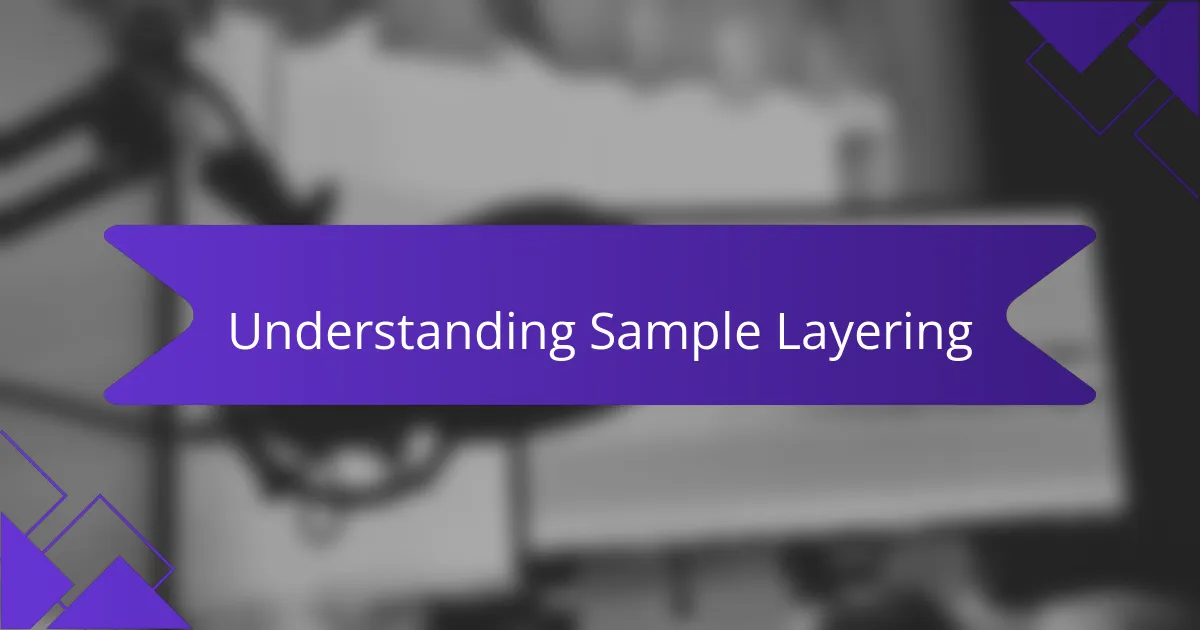
Understanding Sample Layering
When I first started layering samples in Serato Studio, I quickly realized how much depth it could add to my tracks. It’s like building a house; each sample can serve as a different room, offering unique vibes to your overall sound. As I experimented, I discovered that combining various sounds not only enhances the energy but also creates a richer listening experience.
One thing I learned early on is that not all samples blend well together. Here are some tips for effective sample layering:
- Choose Complementary Sounds: Look for samples that harmonize in key and tone.
- Mind the Frequencies: Be aware of frequency clashes; sometimes less is more.
- Experiment with Effects: Adding reverb or delay can create space and depth.
- Use Different Rhythmic Patterns: Layering different rhythms can make your track more dynamic.
- Trust Your Ear: Ultimately, go with what sounds good to you; your intuition matters.
Every layer contributes something special, and it’s exhilarating to discover what those layers can create together.
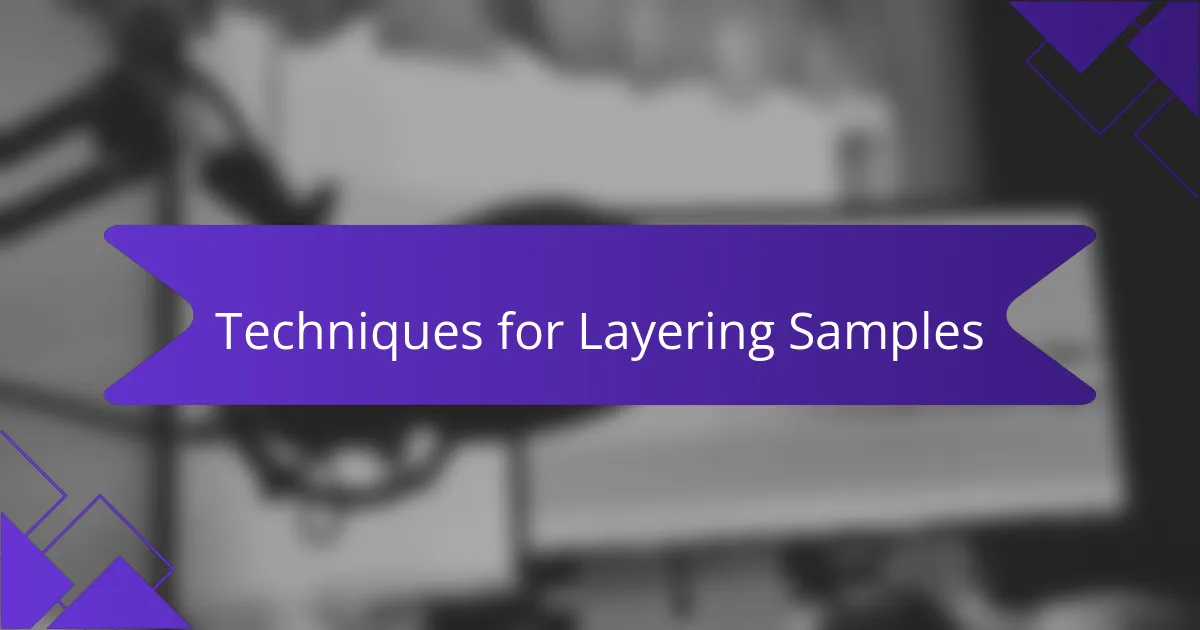
Techniques for Layering Samples
When it comes to layering samples in Serato Studio, I find it’s all about creating depth and texture in my tracks. One technique I often use is to start with a solid base layer, such as a rhythmic percussion loop. From there, I can gradually add melodic elements or atmospheric sounds, allowing each layer to interact harmoniously while still standing out. It’s a bit like cooking; you need to find the right balance of flavors to create a dish that’s both delicious and interesting.
In my experience, it helps to think of each sample as a puzzle piece. Here are some effective techniques I implement for layering:
- Volume Levels: Adjust the volume of each sample to ensure they complement rather than overpower each other.
- Panning: Position samples in the stereo field to create a sense of space—keeping some samples centered while others are panned left or right.
- Equalization (EQ): Use EQ to carve out space for each sample, enhancing clarity and reducing frequency clashes.
- Effects Application: Experiment with reverb or delay to add depth and dimension to your layers, making them feel more cohesive.
- Sample Variation: Utilize variations of similar samples, such as different takes, to maintain interest while keeping the overall vibe consistent.
These techniques not only enhance my tracks but also evoke emotions that resonate with my audience.
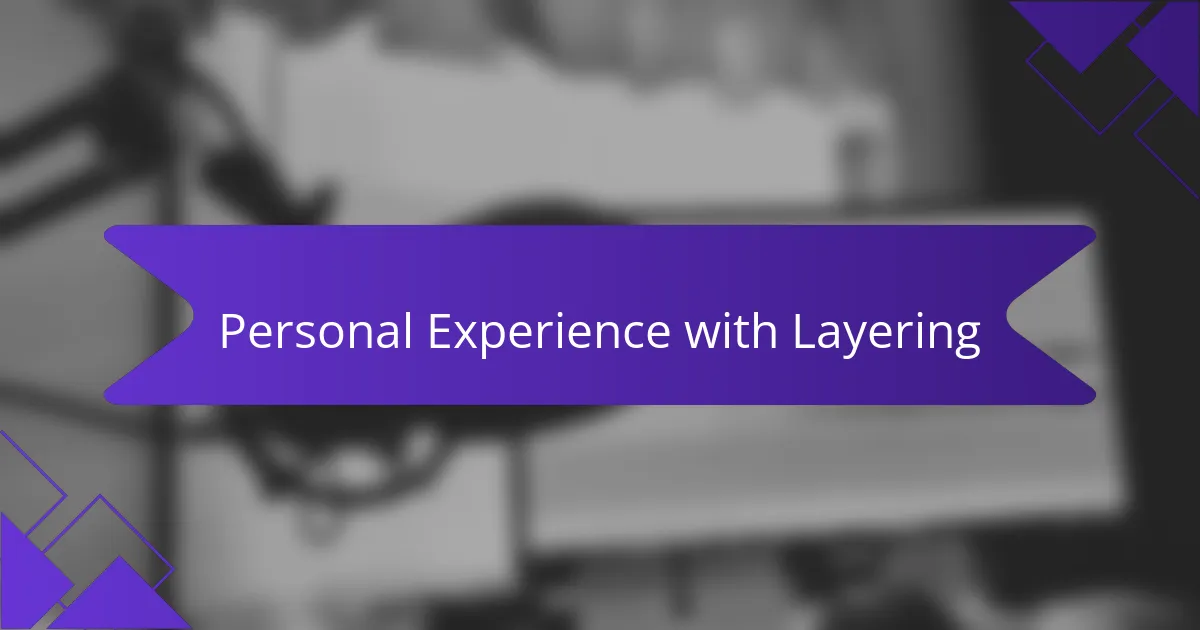
Personal Experience with Layering
Layering sounds in Serato Studio is something I genuinely enjoy. I remember my first attempt; I felt excitement mingled with a bit of apprehension. The moment I layered a vocal sample over a beat I created, it felt like my music truly came alive. I often find that layering not only enhances the depth of my tracks but also allows me to express my artistry more fully. It’s an exhilarating process that keeps me motivated to experiment further.
From my experience, it’s essential to consider the elements I’m layering. For instance, balancing frequencies is crucial. I often utilize EQ adjustments to ensure that no sample overshadows another. The careful selection of sounds can lead to a harmony that resonates emotionally with listeners.
Here’s a quick comparison of my layering strategy versus a more traditional approach:
| My Layering Strategy | Traditional Approach |
|---|---|
| Focus on emotional resonance | Focus on technical proficiency |
| Experiment with unique samples | Use pre-selected samples |
| Dynamic EQ adjustments | Fixed EQ settings |
| Intuitive mixing | Strict mixing rules |
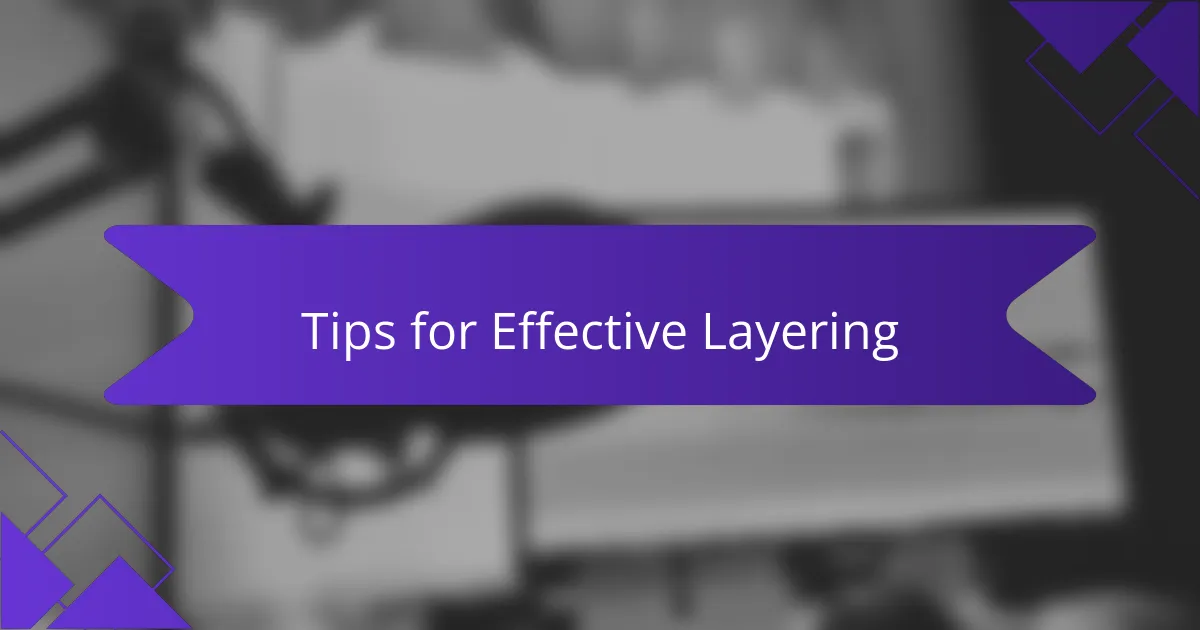
Tips for Effective Layering
When layering samples in Serato Studio, it’s important to listen to how each sound interacts with the others. I remember my early days experimenting with different combinations; some sounds clashed while others created beautiful harmonies. The key is to trust your instincts and let your creativity guide you.
A great tip is to focus on layering sounds that complement each other both rhythmically and melodically. For instance, using a deep bass with airy synths can create a captivating mix. I often play around with volume levels and panning to carve out space in the mix, making each layer more distinguishable yet cohesive.
Lastly, don’t hesitate to use effects to enhance your samples. A quick reverb or delay can add depth and interest. I’ve found that sometimes, the smallest tweaks can bring a track to life in unexpected ways.
| Tip | Explanation |
|---|---|
| Complementary Sounds | Layer samples that enhance each other’s strengths. |
| Volume and Panning | Adjust levels and placement in the stereo field for clarity. |
| Use of Effects | Add effects to create depth and texture in your mix. |

Conclusion and Future Exploration
As I reflect on my journey with layering samples in Serato Studio, I realize how vital this skill has become in shaping my sound. Each session in the studio feels like a new adventure, urging me to dive deeper into the creative process. It’s not just about technical execution; it’s about the joy and satisfaction that comes from crafting something that excites both me and my audience.
Looking ahead, I’m eager to continue experimenting with various techniques and tools available within Serato Studio. Who knows what new sounds or styles I might discover? The beauty of music is that it’s ever-evolving, constantly inviting us to push boundaries and remix our understanding of what’s possible.
Ultimately, I believe the exploration of sound layering is an ongoing journey. Every track I create brings new lessons and insights, making me appreciate the nuances of music even more. I can’t wait to see where this path takes me next—it’s all about the thrill of discovery!



